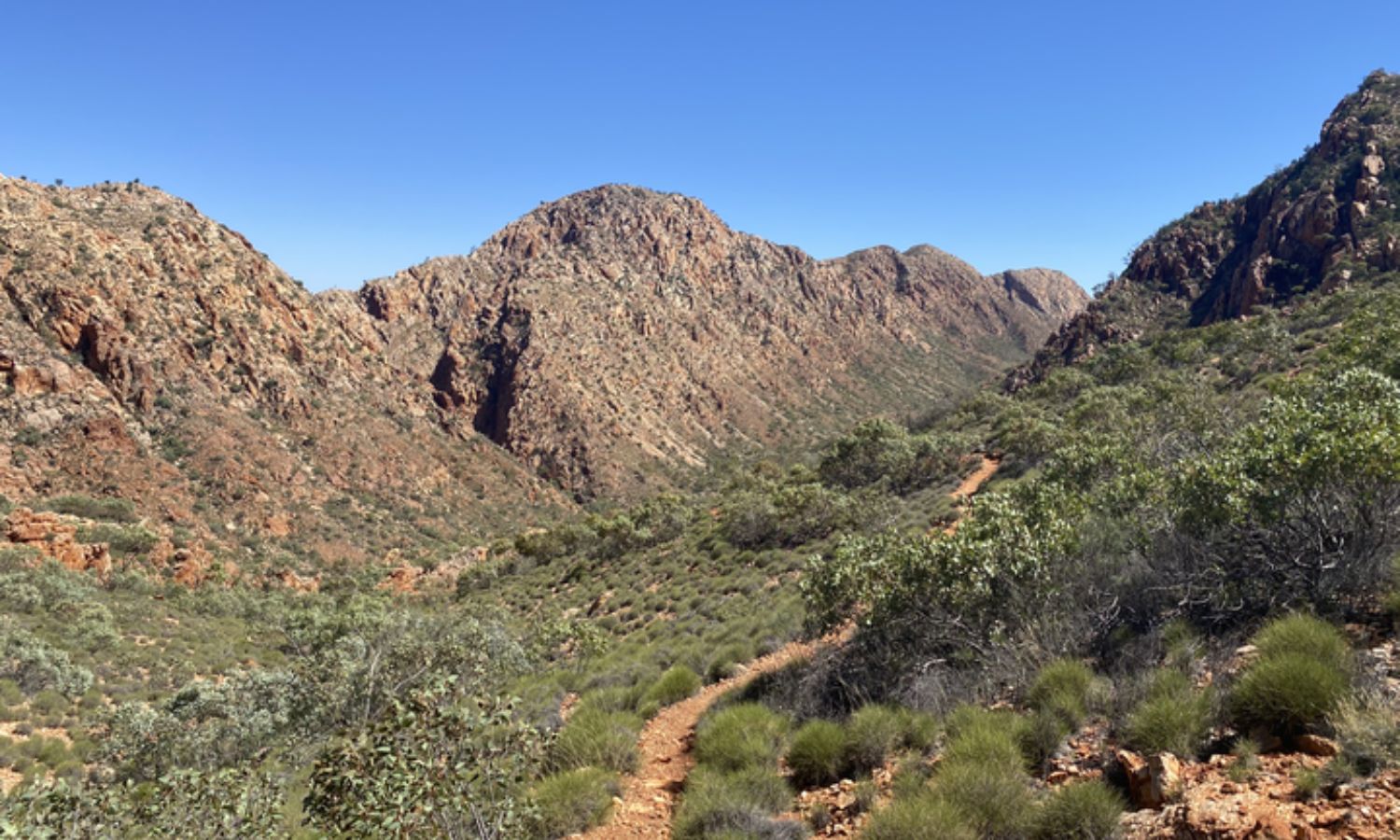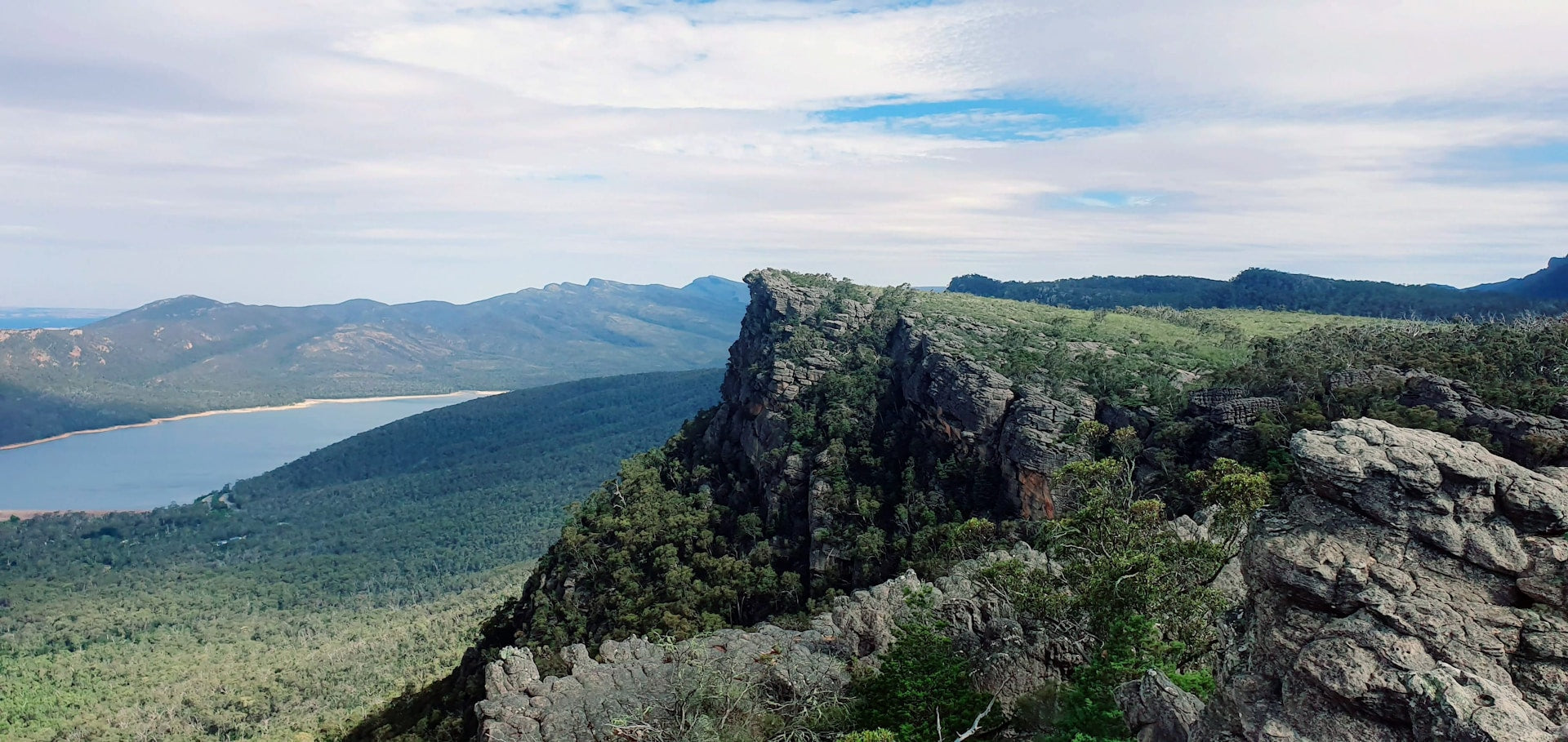What is Leave No Trace?

It’s no secret that we love the outdoors at Amble, and it’s so important to leave no trace when you’re adventuring outdoors (or, ideally, leave it better than you found it). Whether you're a regular adventurer or just starting to explore, Leave No Trace is a core foundation for recreating responsibly outdoors.
What’s Leave No Trace all about?
It’s a core set of 7 rules that ensure the outdoors stays in tip top condition for years to come. Essentially, it’s minimising our impact on the environment whilst outdoors. Because if we’re going to be encouraging you to get outdoors, we need to ensure those adventures leave no trace behind.
1. Plan ahead and prepare

The first rule of thumb is to plan ahead and be prepared. Headed to the Blue Mountains but forgot your map and didn’t pack enough water? That’s a situation we’d like to avoid. Planning ahead not only ensures your safety but also helps reduce your impact on the environment. Most importantly, don’t forget to take emergency supplies such as a first aid kit, PLB, emergency shelter and blanket.
Different trails, terrain and national parks are all unique so it’s important to research before you head out. That way you can understand the specific challenges of the area you plan to visit. Are you carrying enough water? Is it safe to head out in the weather conditions? Do you know how long the hike should take? And is it within your abilities, or perhaps best left for when you have more experience?
It’s important that you have all the essentials when getting ready, including a waterproof jacket, sunscreen, plenty of water, a first aid kit, a PLB, a fully charged phone, and ideally a map too.
Last but not least, let someone know where you’re heading off to and how long you’ll be, so if you’re not back when you expected or something goes wrong, you’ve got your bases covered.
2. Travel and camp on durable surfaces

Now that your adventure is underway, let's talk about being responsible on the trail and where you should set up camp.
When hiking, stick to the trail and don’t make any shortcuts as wandering off can damage fragile ecosystems and cause soil erosion.
If available, camp at established campsites because these areas are designed to withstand the impact of campers, so you'll do less harm to the environment. If you don’t have access to a campsite make sure to avoid camping on surfaces such as soft plants, muddy sites, and fragile soil layers. Instead, choose rock outcrops, sand, gravel, dry grasses, snow, and tent platforms. Camping too close to rivers or lakes can harm aquatic habitats so make sure you camp at least 100-metres away from these ecosystems.
3. Dispose of waste properly

Everything you pack in, you’ll need to pack out and take home with you. This includes wrappers and all leftover food, including organics like apple cores, as they’re not native to the environment so aren’t good for wildlife. If toilets are available – use them! If not, pack it out or dig a hole, making sure it’s at least 15cm deep, 100m away from water and that you cover it up with soil afterwards. Toilet paper, sanitary pads and tampons should be packed out too as they don’t biodegrade.
Be conscious to not use too much soap and toothpaste, make sure it’s biodegradable, and use it at least 50m away from water as it can contaminate drinking water and harm wildlife. Hot tip: hot water is great for washing dishes but if you absolutely must use detergent, again, make sure it’s biodegradable. All used water should be scattered into the bush, not into waterways like creeks, rivers or dams.
4. Leave what you find

Leaving wildlife and plants alone is a biggie. While Australia’s flora, fauna, and animals are arguably the best part of the outdoors, make sure to keep your distance and let them do their thing. As tempting as that rock or shell is to show off to all your friends back home, it’s part of the natural ecosystem, and for everyone else to enjoy too.
Remember to be mindful of Indigenous cultural sites and artefacts, leaving them as you found them – a piece of history. If certain parts of the trail/locations are closed, respect the closure and do not visit them.
It’s important to clean your shoes and gear as you also don’t want to bring any diseases or invasive species back home with you by accident. So, make sure to wash your gear thoroughly – that means getting rid of soil, seeds or spores from boots, tyres and any gear that gets dirty.
5. Minimise campfire impact

There's something magical about a campfire under the stars, but it’s so important to minimise your campfire impact and not leave any chance for a fire to get out of hand. Make sure to check fire restrictions and whether you’re allowed to make a fire at the location you’re planning on visiting, or if it’s a total fire ban day in which you’ll have to wait til next time.
Only light campfires in permitted areas and remember to use established fire rings or pits, keep your fire small and always have water on hand to put it out in the case of emergency. Bring kindling and wood from home, and don’t take any sticks or branches off trees.
6. Be considerate of others

Be a good neighbour to your fellow hikers, campers and adventurers. Make sure to be mindful of others by keeping the noise down and letting everyone enjoy the peace and quiet.
Sharing is caring, so if you come across other hikers or campers, be considerate and lend a hand if needed. Remember, the outdoors is for everyone to enjoy.
If dogs are allowed where you’re heading (always remember to check first), and you’re bringing them along, make sure they remain on a leash and follow any regulations in the area.
7. Respect wildlife

Wildlife is just as important as the waterways, trees and soil. And whilst we know they can be super cute, make sure not to follow or approach any animals in the wild. Also, when wildlife are mating, nesting or raising young, it’s best not to interfere and leave them in peace. The last thing we want is to scare them away or disturb their habitat.
These animals aren’t like your doggies who are (always) begging for a treat. Feeding wildlife actually damages their health and can expose them to predators or change their natural behaviours. This is why it’s essential to make sure your food is secure and that you never feed local wildlife.
Why is Leave No Trace important?
To ensure we can enjoy the natural environment for decades to come, and to help preserve nature, maintain ecosystem health, protect wildlife and maintain Indigenous heritage.
Is tagging specific locations against the Leave No Trace principles?
Digitally, it’s also important to leave no trace. While we want everyone to enjoy and discover all that’s out there, specific geotags can mean hundreds of people flock to the exact same spot, which is more than places can naturally withstand. Still want to share your adventures? Tag the National Park or general area you’re in rather than the specific spot, to let people explore it for themselves.
Make sure to remember these handy Leave No Trace principles when you’re heading out on your next adventure.
- Tags: Values



